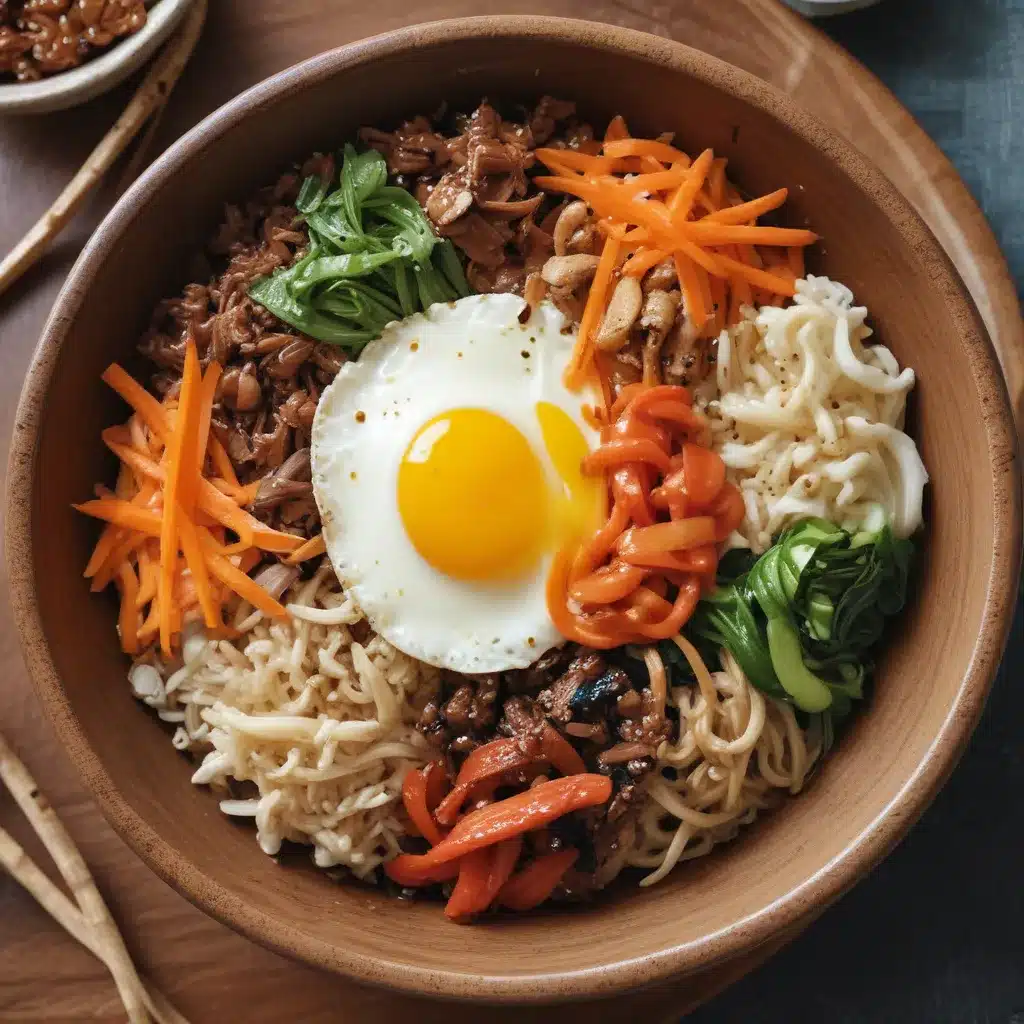
Discovering the Delights of Homemade Bibimbap Sauce
You know those nights when you’re craving Korean food, but the thought of making an entire spread of banchan (Korean side dishes) feels a little too daunting? Yeah, been there. That’s why I’m so grateful for the magic of bibimbap – a hearty rice bowl that lets me enjoy the bold flavors of Korean cuisine with minimal effort.
But here’s the thing – while bibimbap is a blank canvas just waiting to be topped with all sorts of delicious ingredients, the real star of the show is the bibimbap sauce. That pungent, sweet, and savory elixir that pulls the whole dish together. And let me tell you, friends, homemade is where it’s at.
Pickled Plum has an amazing recipe that captures the essence of authentic Korean flavors, and let me walk you through why it’s a total game-changer.
Mastering the Balancing Act of Bibimbap Sauce
When it comes to bibimbap, the sauce is the crucial component that ties all the elements together – the rice, the veggies, the protein, the egg (if you’re feeling extra). But finding that perfect balance of spicy, sweet, and savory can be a real challenge, especially if you’re not a die-hard spice lover like myself.
See, the thing is, restaurant versions of bibimbap sauce can sometimes be a bit too much for the uninitiated. The heat from the gochujang (Korean red chili paste) can easily overpower the other flavors, leaving you reaching for a glass of water instead of savoring every bite. But with this homemade recipe, the gochujang is balanced out beautifully by a touch of honey, soy sauce, and sesame oil.
The result? A sauce that delivers a satisfying, smoldering heat rather than an overwhelming, volcanic blast. It’s the kind of condiment that enhances the natural flavors of your bibimbap toppings, rather than masking them. And let’s be real, being able to control the spice level is a total game-changer when you’re trying to please a crowd (or, you know, just your own taste buds).
The Joy of Customizable Bibimbap Creations
One of the things I love most about this homemade bibimbap sauce is how incredibly versatile it is. Sure, you can stick to the classic toppings like spinach, carrots, and bulgogi (marinated beef), but the real fun comes in getting creative with your fillings.
For example, I’ve been known to raid my fridge and repurpose leftover banchan like sookju namul (Korean bean sprout salad), spicy cucumber salad, and even kimchi to build my ultimate bibimbap masterpiece. And you know what? This sauce complements all those vibrant flavors beautifully.
But the real beauty lies in the fact that you can tweak the recipe to suit your personal preferences. Not a big fan of heat? Cut back on the gochujang. Prefer a sweeter note? Add a touch more honey. The possibilities are endless, and that’s what makes this sauce so darn irresistible.
Bibimbap Sauce for the Win
So there you have it, folks – your new bibimbap sauce secret weapon. With just a handful of pantry staples and five minutes of your time, you can whip up a batch of this pungent, spicy, sweet, and salty condiment that’s going to take your Korean rice bowls to new heights.
Pickled Plum’s recipe is my go-to, but feel free to experiment and find the version that speaks to your taste buds. Trust me, once you’ve experienced the joy of homemade bibimbap sauce, you’ll never look at the store-bought stuff the same way again.
Now, if you’ll excuse me, I’ve got a date with a big ol’ bowl of bibimbap and this heavenly sauce. Bon appetit, my friends!
